AWS EKS
EKS Storage
EKS Other Storage
Before we wrap up storage on EKS, let’s explore additional AWS-managed file and object stores beyond Amazon EBS and Amazon EFS. AWS offers FSx for Lustre, S3 (via API or CSI), and the node’s local instance storage. While powerful, these may require manual provisioning or mounting rather than automatic CSI-based dynamic provisioning.
![]()
1. Amazon FSx for Lustre
Amazon FSx for Lustre delivers a high-performance, POSIX-compliant file system ideal for workloads demanding massive throughput and low latency. You must create the file system in AWS and then mount it into your pods by defining a PersistentVolume and PersistentVolumeClaim.
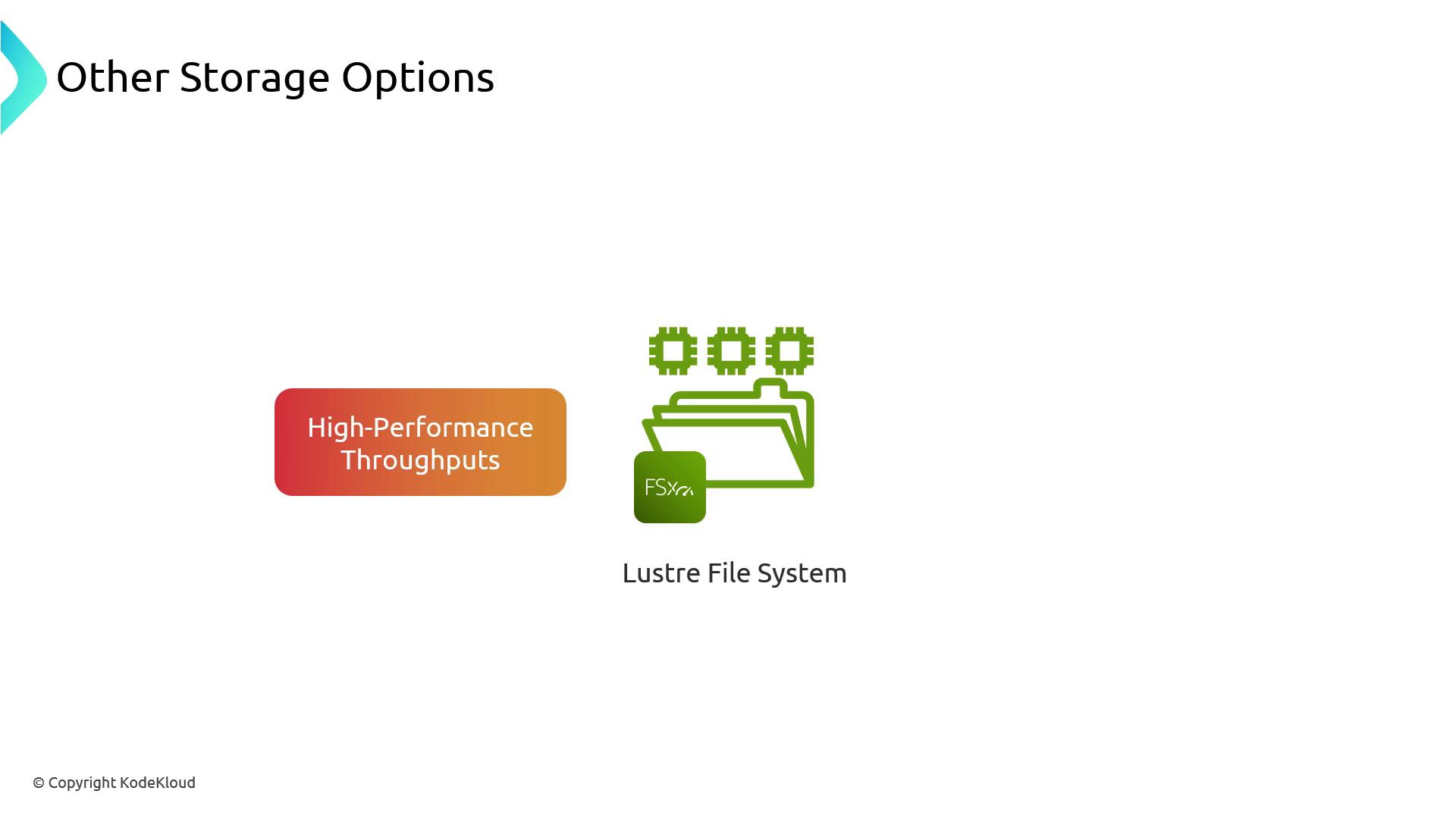
Example PV and PVC
apiVersion: v1
kind: PersistentVolume
metadata:
name: fsx-lustre-pv
spec:
capacity:
storage: 1Ti
accessModes:
- ReadWriteMany
csi:
driver: fsx.csi.aws.com
volumeHandle: fs-0123456789abcdef0
volumeAttributes:
dnsname: fs-0123456789abcdef0.fsx.us-west-2.amazonaws.com
persistentVolumeReclaimPolicy: Retain
---
apiVersion: v1
kind: PersistentVolumeClaim
metadata:
name: fsx-lustre-pvc
spec:
accessModes:
- ReadWriteMany
resources:
requests:
storage: 1Ti
volumeName: fsx-lustre-pv
Note
FSx for Lustre is POSIX-compliant, so standard UNIX file operations work as expected.
2. Amazon S3
Amazon S3 is an object store accessed via its API. Typically, applications use AWS SDKs or CLI to interact with buckets. AWS also provides the aws-s3-csi-driver that exposes S3 buckets as file systems.
![]()
Mounting S3 via CSI
apiVersion: storage.k8s.io/v1
kind: StorageClass
metadata:
name: s3-sc
provisioner: s3.csi.aws.com
reclaimPolicy: Retain
parameters:
bucket: my-eks-bucket
region: us-west-2
---
apiVersion: v1
kind: PersistentVolumeClaim
metadata:
name: s3-pvc
spec:
storageClassName: s3-sc
accessModes:
- ReadWriteMany
resources:
requests:
storage: 10Gi
Keep in mind the following filesystem limitations:
- S3 is not POSIX-compliant; the CSI driver maps object APIs to file operations.
- Renaming an object involves a copy-and-delete under the hood:
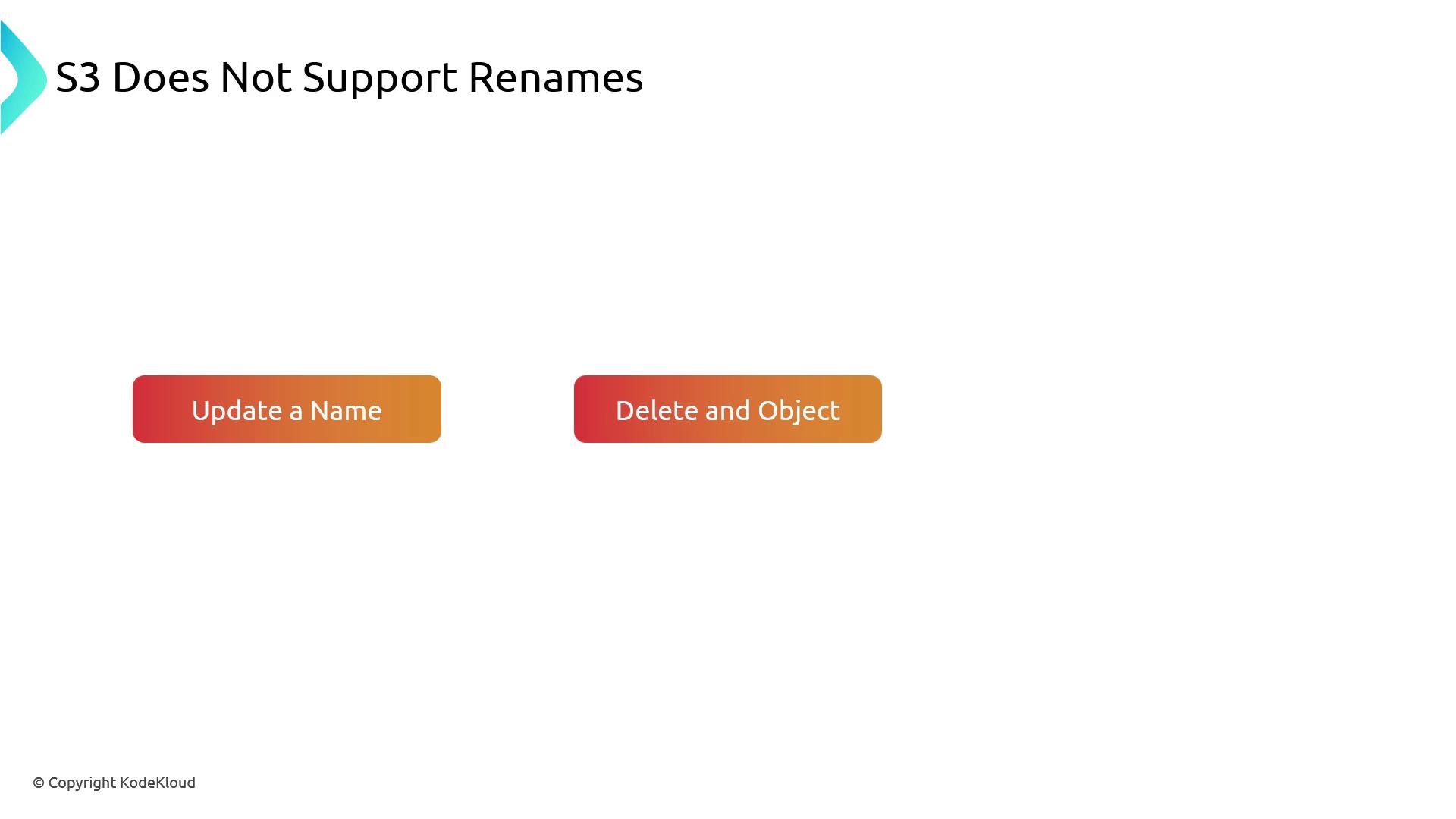
- “Directories” are key prefixes; empty folders don’t exist unless objects are present.
Warning
Some file operations (e.g., hard links, permissions) may not behave as expected on S3. Review the CSI driver documentation for feature support and caveats.
3. Local Instance Storage
Each EC2 node includes either HDD or NVMe instance storage. It delivers blazing-fast I/O but is ephemeral—data is lost when the instance is stopped or terminated.
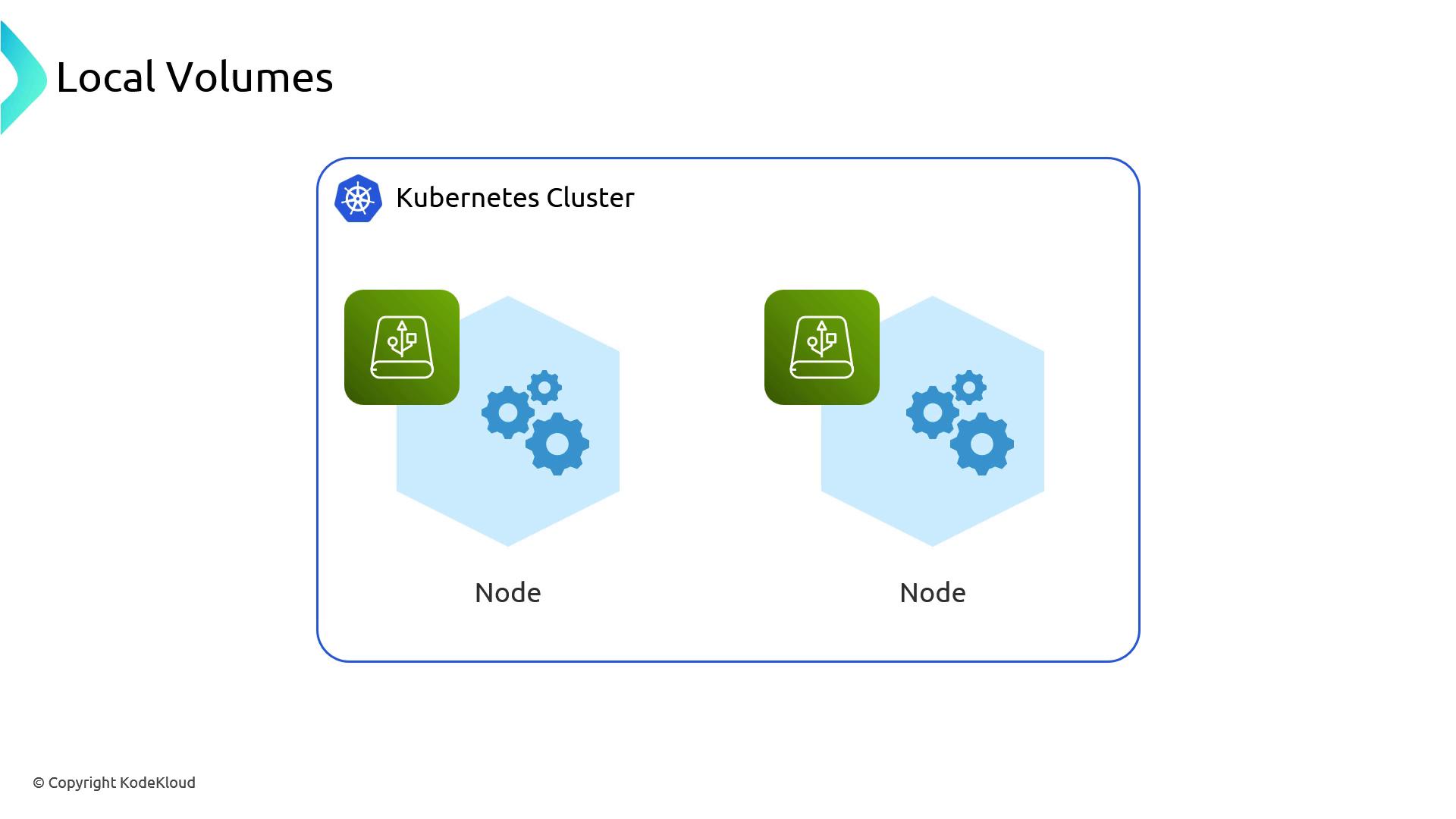
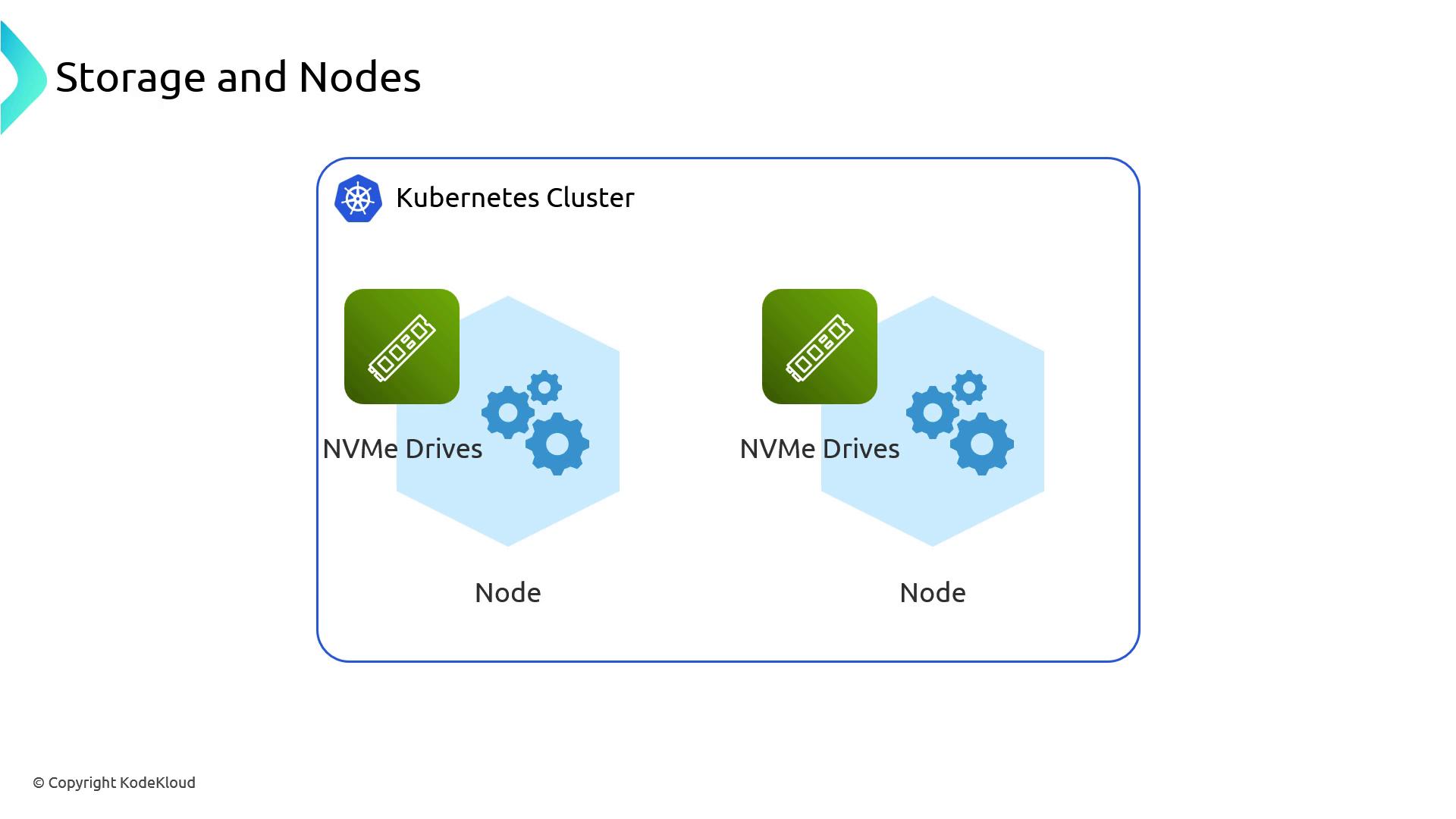
- No native CSI driver exists for instance store.
- You must manually manage mount points and node-level configuration.
- For persistence, attach an EBS volume or snapshot local data before shutdown:
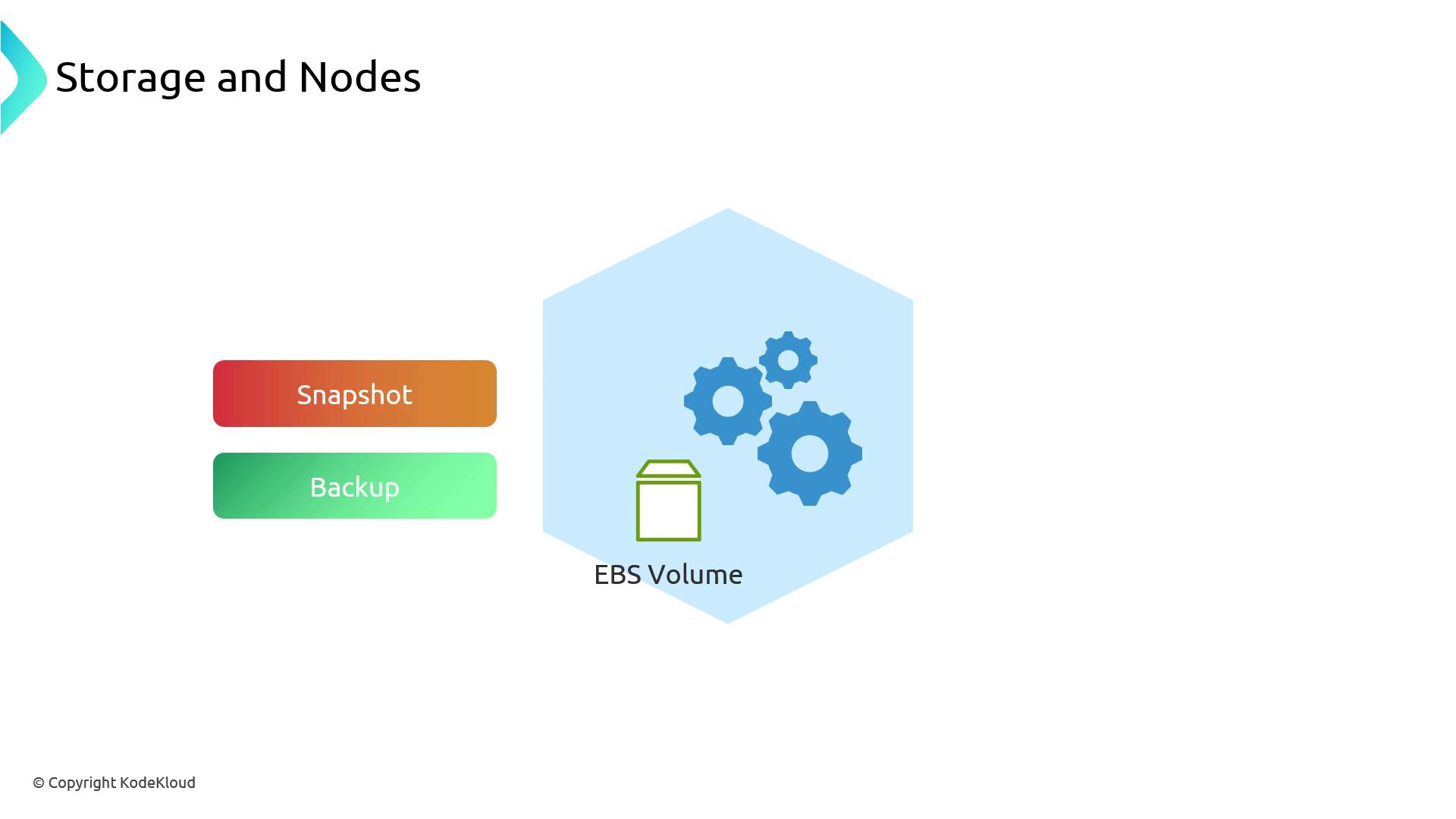
Lifecycle Management
![]()
- Backup and restore logic must be custom-built (e.g., cronJobs, AWS DataSync).
- Consider combining with EBS for snapshots and durability.
4. In-Cluster Storage Solutions
Running storage natively within Kubernetes eliminates external dependencies like IAM, VPC routing, and separate APIs. Popular CNCF-backed options include Ceph, Longhorn, OpenEBS, and Rook. These platforms deploy operators and CRDs to manage storage across nodes.
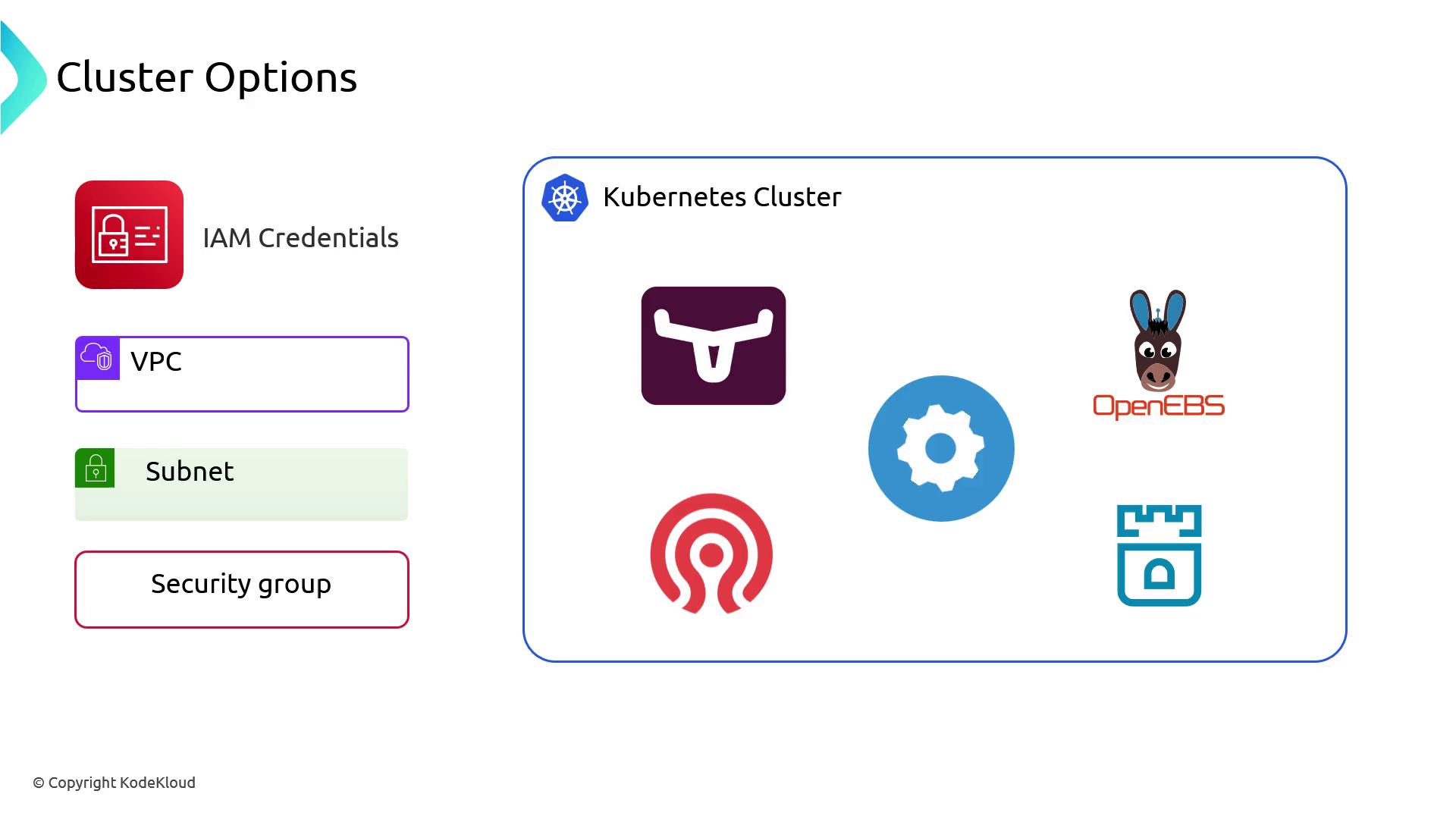
Key benefits:
- Storage provisioning via Kubernetes APIs (no external calls).
- Built-in replication, healing, and snapshots managed by operators.
- Cloud-agnostic—support on any Kubernetes cluster, on-prem or in another cloud.
Comparative Overview
| Storage Type | Performance | Persistence | POSIX Compliance | Dynamic Provisioning |
|---|---|---|---|---|
| FSx for Lustre | Very high | Durable | Yes | Manual (CSI only) |
| Amazon S3 (CSI) | Moderate | Durable | Partial | Yes (CSI) |
| Local Instance Storage | Ultra low latency | Ephemeral | Yes | Manual |
| In-Cluster Solutions | Variable (replicated) | Durable (self-managed) | Yes | Yes (Operators) |
Conclusion
Your choice hinges on throughput requirements, data durability, and operational overhead. Whether you use FSx for Lustre’s HPC file system, object-based S3, node-local volumes, or a self-contained in-cluster solution, plan for backups, snapshots, and access controls to keep your data safe and available.
![]()
Watch Video
Watch video content